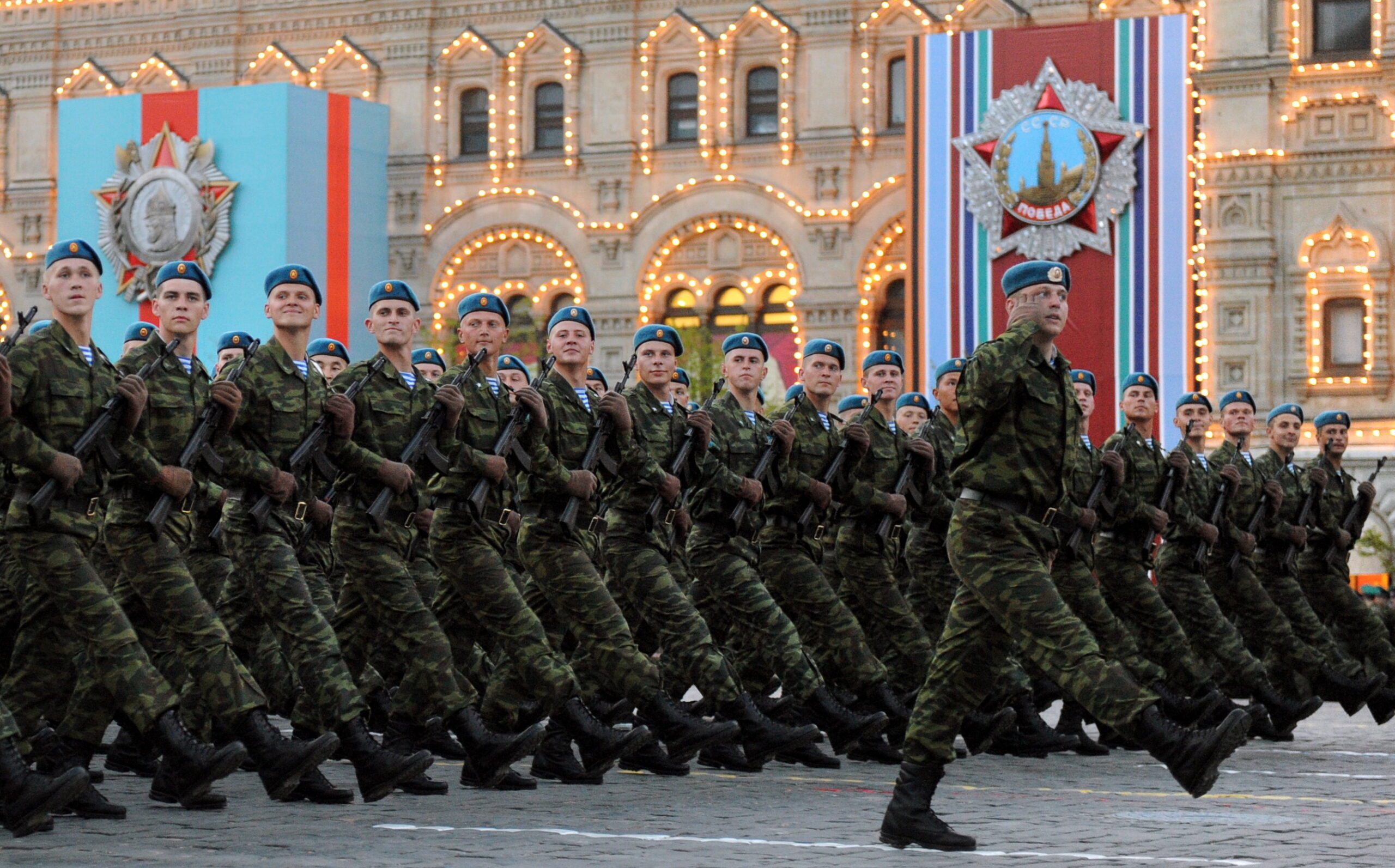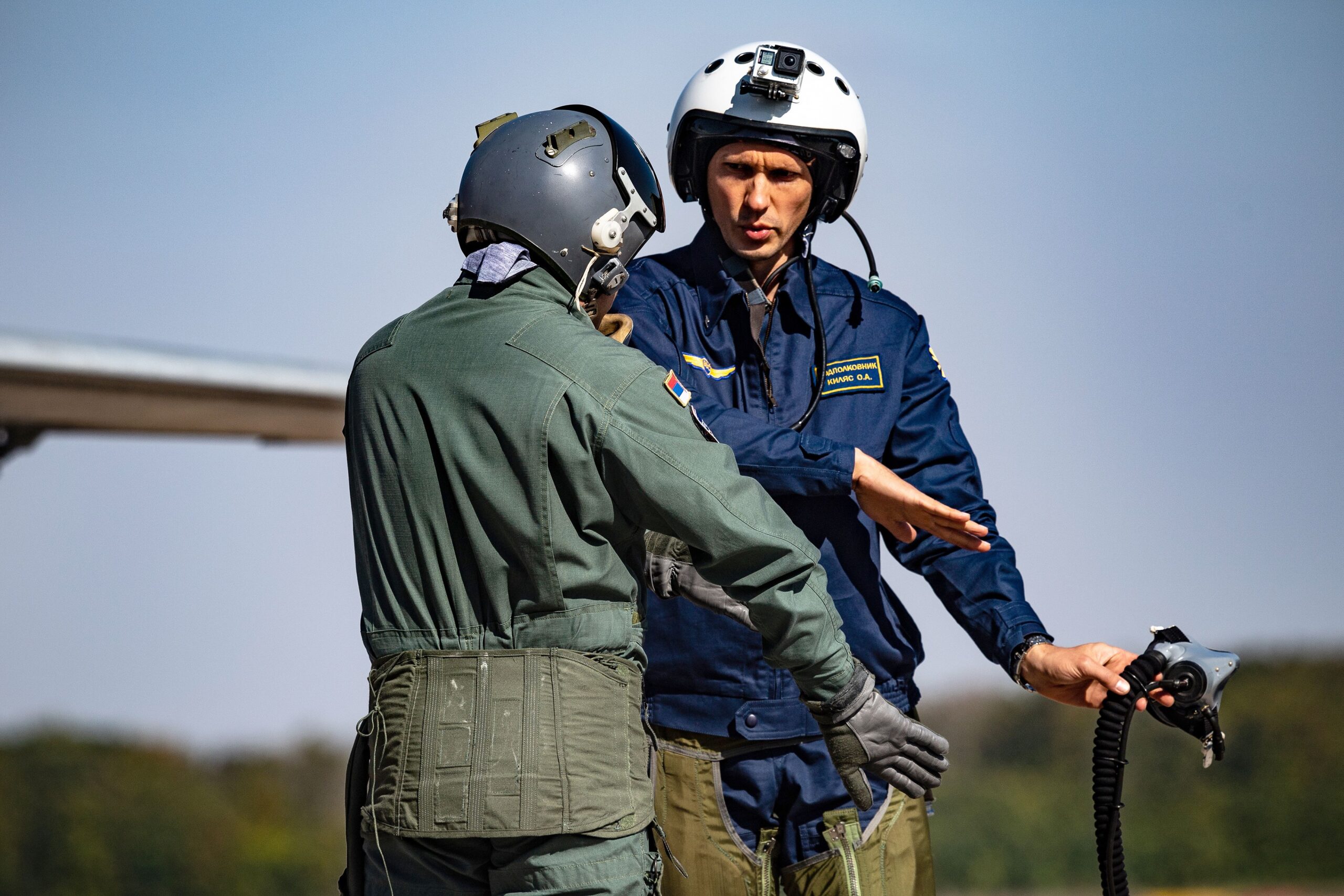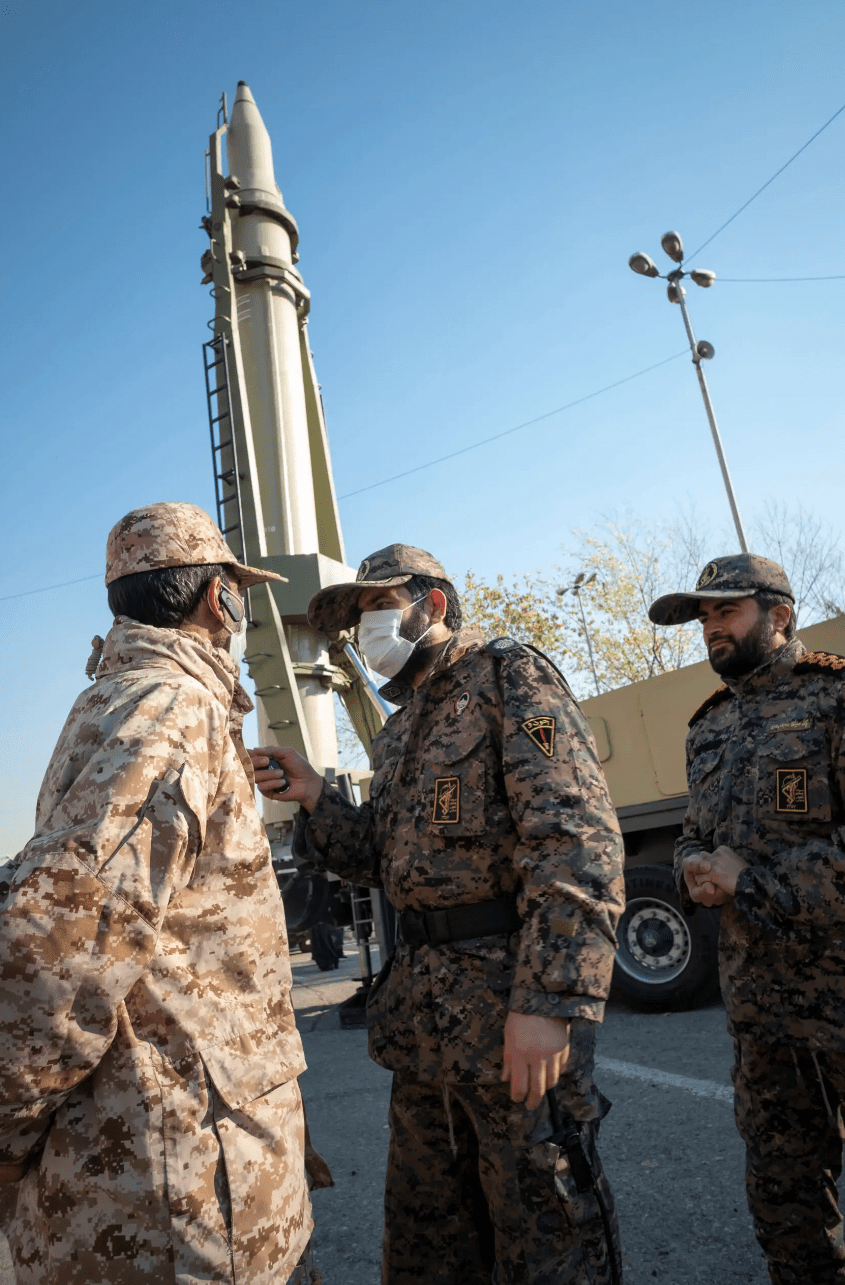The Kremlin is reportedly actively recruiting Serbian ‘volunteers’ to fight in its war in Ukraine, despite official warnings from Serbia’s own ministry of defense. Dozens of Serbian fighters are already in Russia, something that could threaten Serbia’s ambitions to join the European Union as well as sour the traditionally close relationship between Moscow and Belgrade.
An investigation by the U.K.’s Guardian newspaper includes accounts from two Serbian nationals who signed up to fight with the Russian Army. Other reports state that Moscow has plans to recruit “thousands” of Serbian fighters as it struggles to man its units after 18 months of fighting in Ukraine.

The man said to be behind the recruitment scheme is Davor Savičić, a Serbian who started fighting with Russia in Ukraine back in 2014 and who allegedly has links with the Wagner Group. This private military company played an important role in the conflict before its leader, Yevgeny Prigozhin, broke ranks with the Putin regime and was then killed in a plane crash.
“We are now officially signing a contract with the Russian Ministry of Defense,” Savičić told a Russian state TV channel this previous summer. “Soldiers go through the Krasnogorsk military registration and enlistment office,” he added. “After additional training, the guys are sent to the Luhansk direction.”
In that same TV interview, it was revealed that at least some of the Serbian fighters had joined the 106th Airborne Division, one of four such divisions in the Russian Airborne Troops, or VDV. Reports suggest that plans are for the Serbian recruitment program to expand to a point that a separate battalion can be formed within the 106th Division. The same division has already been reported as including foreign fighters from countries other than Serbia, too.
The Guardian spoke to Serbian fighters who had decided to join the Russian military for “ideological reasons,” although the fighters are also being financially well compensated.
The recruitment effort reflects the Kremlin’s continuing difficulties in filling the ranks of its armed forces using Russian soldiers and conscripts alone. The war in Ukraine has led to changes in legislation to make it easier for foreign nationals to join the Russian military. At the same time, efforts have been made to secure more Russian fighters, although moves to expand the draft — including increasing the age limit for compulsory military service — have been widely unpopular. With an election around the corner, such concerns will be keenly felt in the Kremlin.
On one hand, looking to Serbia for new military recruits makes sense for Moscow. The Balkan country has long had close links to Russia and there is a strong nationalist movement — with its own paramilitary elements — that is closely aligned with some of Vladimir Putin’s own nationalist ambitions.
However, in recent years Serbia has been making efforts to develop new relations with international partners other than Russia. Recently, the Serbian Armed Forces have even begun training with the U.S. military, something that would have been unthinkable a decade ago. Traditionally, the Serbian Armed Forces have had a close partnership with their Russian counterparts, including many joint exercises.

Serbia’s President Aleksandar Vučić has already spoken out about Moscow’s efforts to secure Serbian fighters and pointed to the law that forbids Serbian nationals from fighting in conflicts abroad; more than two dozen individuals have already been prosecuted on these charges. Clearly, having Serbian fighters in Ukraine is a concern to pro-European Union elements within the Serbian government in particular. Serbia has had candidate status to join the EU since 2012.
The loss of the Wagner Group has no doubt also been keenly felt by Russian commanders in Ukraine. Earlier this week, it was reported that Redut, another purported private military company, is now recruiting mercenaries to fight in Ukraine, including former Wagner personnel. The mercenaries are being recruited under the guise of “volunteers”, the U.K. Ministry of Defense claims.
Before diving into the latest news from Ukraine, The War Zone readers can get up to speed with recent events with our previous rolling coverage here.
The Latest
Elsewhere in Russia, the lower house of parliament passed a law today that revokes ratification of the Comprehensive Nuclear Test Ban Treaty (CTBT). This treaty prohibits any kind of nuclear explosions anywhere in the world, although it has never fully entered into force.
The second and third readings of Russia’s bill revoking ratification of CTBT were passed unanimously by 415 votes to zero.
The move was widely expected, with Russia’s President Vladimir Putin earlier this month calling for the State Duma to approve a withdrawal from the treaty. This, he argued, would “mirror” the position of the United States, which signed the 1996 treaty but never formally ratified it.
“We understand our responsibility to our citizens, we are protecting our country,” said Vyacheslav Volodin, the speaker in the Russian parliament. “What is happening in the world today is the exclusive fault of the United States.”
The wider implications of the move remain to be seen, although Russia has said that it will not resume testing unless the United States does.
However, arms control experts have voiced concern that this may pave the way for Russia to conduct a nuclear test of its own, something that could be seen to mark a significant escalation in tensions with the West.
In somewhat related news, footage has been shown today of Russian President Vladimir Putin accompanied by the rarely seen ‘nuclear briefcase’ during his trip to China. The briefcase itself, analogous to the ‘nuclear football’ that accompanies the U.S. president, can be used to order a nuclear strike and is seen being carried by two naval officers. A security detail is also present.
In a post on the Telegram messaging app alongside the footage, the Russian state news agency RIA Novosti said: “There are certain suitcases without which no trip of Putin’s is complete.”
In Russian parlance, the nuclear briefcase is known as the “Cheget,” named after a peak in the Caucasus Mountains.
Putin is currently in Beijing to meet his Chinese counterpart, Xi Jinping, the implications of which you can read about here.
Aside from China, Russia has a key ally in Iran, one that has also shown a willingness to directly provide weapons for the war in Ukraine, notably in the form of Shahed-series suicide drones.
Moscow has also now said that it will no longer obey U.N. Security Council restrictions that prevent Iran from receiving Russian missile technology, once these expire today.
The Kremlin did not say whether it would actively support Iranian missile development, but that is clearly a concern.

Clearly, Tehran is working to develop nuclear-capable ballistic missiles with increasingly long ranges, and Russia is in a position to provide relevant technology.
A development of this kind could see yet more Iranian drones headed to Russia, for use in Ukraine. There is also the possibility that Iran might start to transfer ballistic missiles to Russia, something that we considered a year ago, and which you can read more about here.
The Ukrainian city of Zaporizhzhia, in the region of the same name, in the southeast of the country, came under Russian missile attack overnight. The morning raid saw a Russian strike hit a residential building in the city, killing at least two people, according to a statement from Ukrainian President Volodymyr Zelensky. Another five people were reported injured, while eight apartments were destroyed. As of earlier today, rescuers were still searching for survivors in the rubble, with three people reported missing after the attack.
“Overnight, Russian terrorists attacked Zaporizhzhia with missiles, striking an ordinary five-story residential building,” Zelensky said on Telegram. “The evil state continues to use terror and wage war on civilians. Russian terror must be defeated.”
Elsewhere, Russian attacks overnight and today damaged the power grid in the northeastern city of Kharkiv, the second-biggest city in Ukraine, according to local officials.
Yesterday’s dramatic appearance of the U.S.-made Army Tactical Missile System (ATACMS) in the conflict has sent shockwaves through to the Kremlin. Russian President Vladimir Putin, speaking at a news conference in Beijing, said that the U.S. delivery of the short-range ballistic missile to Ukraine was a “mistake” that would increase the threat posed to Russian forces while it also “just prolongs the agony” for Ukraine.
At the same time, however, Putin claimed that the presence of ATACMS would not significantly change the situation on the front. The reported scale of destruction visited upon Russian airbases in occupied Ukraine suggests that this is little more than bluster.
Ukraine claims that it destroyed nine Russian military helicopters, an air defense system, and an ammunition warehouse in the strikes, which employed an early version of ATACMS with a warhead carrying cluster munitions.
Natalia Humeniuk, head of the press service for the security and defense forces in southern Ukraine, has also provided comments on the first use of ATACMS by Ukraine:
“Obviously, this is exactly what the military is constantly talking about, and civilians often misunderstand, and even journalists are offended by, but this will fuel our counteroffensive. The main thing about the counteroffensive is the destruction of the enemy’s capabilities in its deep rear, and this is the key element that really provides the opportunity to take more active steps along the front line and move forward. Considering the enemy had recently intensified its aviation activities, it was clear that we needed to attack the areas that provided the enemy with its capabilities. This is what happened, and the result is obvious,” Humeniuk explained.
As well as ATACMS, the F-16 fighter, another high-end weapon pledged by the United States (and its allies), is incurring the wrath of Russian officials.
Sergei Shoigu, the Russian defense minister, has stated that the Russian Armed Forces are now reinforcing its western border in response to the expected arrival of F-16s in Ukraine starting in 2024. The details of these reinforcements were not detailed.
As we previously reported, Ukraine will receive dozens of F-16s from Denmark and the Netherlands. Earlier this month, Danish Prime Minister Mette Frederiksen said Denmark was working to “expand and deepen” a coalition of countries committed to delivering the fighters to Ukraine.
In August, Denmark and the Netherlands were joined by Norway, which also said it would contribute to delivering F-16s to Ukraine. Meanwhile, many other countries, including the United States, have said they will help train Ukrainian pilots to fly the jets.
In its latest intelligence report on the situation in Ukraine, the U.K. Ministry of Defense says that the Russian Armed Forces are currently escalating their efforts to push forward in some parts of eastern Ukraine.
However, the U.K. defense ministry also assesses Russia’s chances of a major breakthrough as low, considering the nature of Ukrainian defenses there.
Posting to X, formerly known as Twitter, the U.K. Ministry of Defense said:
“There has been a significant increase in Russian offensive activity on the Kupiansk-Lyman axis in the last two weeks. Russian shelling has intensified and elements of the Russian 6th and 25th Combined Arms Armies (CAA) and the 1st Guards Tank Army have conducted attacks, but with limited success.”
“It is highly likely that this activity is part of an ongoing Russian offensive being conducted on multiple axes in eastern Ukraine. The objective of Russian Ground Forces (RGF) on the Kupiansk-Lyman axis is probably to advance west to the Oskil River to create a buffer zone around Luhansk oblast.”
“RGF have built up combat capacity in the Kupiansk-Lyman direction in recent months. However, Ukrainian forces retain a significant defensive presence on this axis, and it is highly unlikely RGF will achieve a major operational breakthrough.”
Elsewhere on the battlefield, reports suggest that Russian forces may be poised to step up their assault on the important town of Avdiivka, north of the Russian-held city of Donetsk. Earlier this week, one of Kyiv’s top commanders declared that the Russian offensive here — one of its largest offensives in months — is failing.
Now, according to a local official, Russia has increased its artillery assault on Avdiivka, in an effort to subdue Ukrainian positions.
“I can say for sure that this is the largest offensive that has ever taken place in Avdiivka since the war began in 2014,” the head of the town’s administration Vitaliy Barabash said.
Barabash said that, for the time being, attacks on the town itself had been scaled back, although skirmishes and shelling of Ukrainian positions continue round the clock.
“Most likely, in the next few days we expect this escalation to continue,” Barabash added.
Possible knock-on effects of the war in Ukraine continue to be felt across the Nordic and Baltic regions, according to recent reports from there.
Carl-Oskar Bohlin, Sweden’s civil defense minister, has said that a subsea telecommunication cable that connects Sweden and Estonia has been damaged. The cable was apparently damaged on or around October 8, at the same time as a subsea gas pipeline and a telecom cable connecting Finland and Estonia were also damaged.
While Russia has not been directly blamed for these incidents, the Finnish government has said that the damage to the gas pipeline and telecom cable was likely the work of “outside activity” and that it may have been a deliberate act.
Staying in Finland, security services there say that the country has seen an uptick in the number of online espionage attempts by Russia since the Kremlin launched its full-scale invasion of Ukraine.
Finland’s security and intelligence service, Supo, has accused Russia of cyberattacks and disinformation campaigns, as well as being one of the biggest culprits in terms of hostile intelligence operations.
“Russia’s espionage attempts towards us have increased during the war, mainly in the cybersphere,” explained Suvi Alvari, a senior analyst for Supo.
Finland’s entry into NATO has only served to increase tensions with Russia, too.
Damaged German-made Leopard 2 tanks are now being repaired in Lithuania, according to the defense ministry there. The work is being conducted in partnership with German industry and is addressing tanks that have already been exposed to combat in Ukraine. After being restored to full combat capability, the Leopard 2s will be returned to the Ukrainian Armed Forces.
A similar effort is also underway in Poland, where a first batch of Leopard 2s used by Ukraine were overhauled and returned to their units earlier this month. The work was undertaken at a specialized maintenance and repair hub that was set up in Poland, and which was first confirmed as having received its first Leopard 2s in July.
Other German-made weapons delivered to Ukraine might be proving somewhat more problematic than the Leopard 2s, according to a report in the German Süddeutsche Zeitung newspaper, which interviewed a Ukrainian officer about the Gepard self-propelled anti-aircraft gun.
The officer in question stated that prolonged use of the Gepard can result in transistors used by the power supply burning out. This leads to problems for the automatic target tracking and guidance system, which means that twice as much ammunition is used to destroy the same target.
While the issue is reportedly easy enough to fix, at least in theory, Ukraine currently lacks the required electrical diagrams. At the same time, spare parts for the Gepard have to be acquired in the West to keep the Gepards up and running, with no permanent solution in sight, the same officer claims.
As we have explained in the past, the Gepard has proven highly effective against Russian drones, and in some cases cruise missiles, owing to its intended use in a point defense role against various low-flying aerial targets.
There have been reports today, so far unconfirmed, of Ukrainian drone strikes against the Russian airbase at Khalino, near Kursk. The video below purports to show explosions at the base caused by the alleged Ukrainian strike, although we are awaiting independent verification of these claims. Kursk-Khalino airbase is home to the 14th Fighter Aviation Regiment of the Russian Aerospace Forces, with two fighter squadrons, both flying the two-seat Su-30SM. The base has come under apparent Ukrainian attack before, with drones being blamed for that earlier incident, in December 2022, which you can read more about here.
That is all for now. This story will be updated when there’s more news to report about Ukraine.
Contact the author: thomas@thedrive.com
